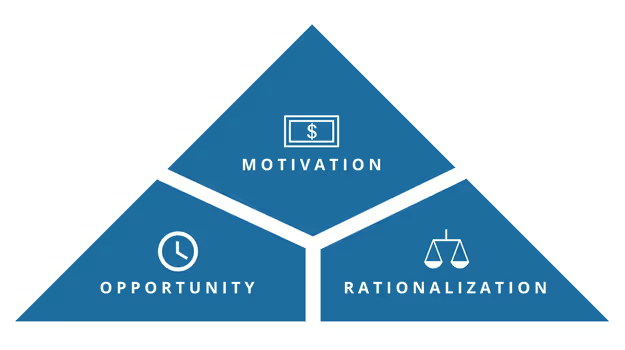#
Article
How is Your Company Tackling Internal Fraud?
How is Your Company Tackling Internal Fraud?
It’s tough to admit that your trusted employees might be engaging in fraud. Tackle internal fraud by addressing the three key elements of The Fraud Triangle.
Just what makes trusted employees commit internal fraud? Are they greedy, evil, desperate, resentful? Are they just bored, looking to see what they can get away with?Employers are often left scratching their heads when they discover internal fraud, wondering how they missed it, why their trusted employees are engaging in it and how they could have prevented the associated losses.But detecting and preventing fraud won’t come easy unless you know what you’re looking for, who you’re looking for, and why they’re stealing in the first place.Don’t wait until it’s too late to protect your company from fraud. Learn more about the 41 Types of Fraud and How to Detect and Prevent Them.
The Costs of Internal Fraud
The average internal fraud scheme costs a company $150,000 and a typical company loses five per cent of its annual revenue to fraud, according to the ACFE’s Global Fraud Study 2016.The same study reported that nearly a quarter of the fraud cases studied caused at least $1 million in losses.But, fraud does more than just damage the business financially.Internally, fraud negatively impacts the environment of the company, ruining trust and raising suspicions betweens management and employees.Externally, fraud may ruin the company’s reputation. As unfair as it may seem, since the company, too, is a victim during internal fraud, prospective clients tend to avoid wavering businesses.
Confronting a Fraudster
If you’re not careful while confronting a fraudster you can cause even more damage.
Learn how best to confront an employee who has been stealing with our confronting employee theft cheat sheet.
The Fraud Triangle
His simple framework incorporates three key elements: opportunity, motivation and rationalization.
One of the oldest and more basic theories in fraud deterrence and detection is the Fraud Triangle Theory, developed in the 1950s by famed criminologist Donald R. Cressey. His simple framework incorporates three key elements: opportunity, motivation and rationalization.In his 1953 work, “Other People’s Money: A Study in the Social Psychology of Embezzlement,” Cressey wrote:
“Trusted persons become trust violators when they conceive of themselves as having a financial problem that is non-shareable, are aware this problem can be secretly resolved by violation of the position of financial trust, and are able to apply to their own conduct in that situation verbalizations which enable them to adjust their conceptions on themselves as trusted persons with their conceptions of themselves as users of the entrusted funds or property.”











